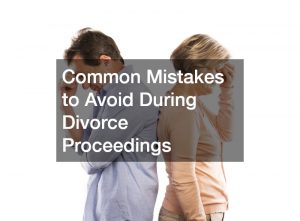- Business owners should address and settle debts as soon as possible to avoid legal issues and financial stress.
- Assessing your business debt involves reviewing outstanding obligations and liabilities, evaluating the impact on operations, and developing a strategy.
- Analyzing available resources, negotiating with creditors, and creating a repayment plan can help settle business debt.
- Options like Chapter 13 bankruptcy, debt settlement negotiations, debt restructuring, or asset liquidation may be used to settle business debt.
- Experienced lawyers can guide the steps needed to ensure successful outcomes in settling debts.
Running a business requires more than just a vision and strategy. One significant aspect that should never be overlooked is financial health, which can make or break a business.
In business, having debt is common, but it can be a source of stress and frustration for any business owner. Unpaid debts can lead to legal issues and, if not handled properly, can lead to the downfall of the entire business.
For every business, having a stable financial foundation is crucial. Any outstanding debts can put a company under tremendous financial stress if unresolved. It can lead to a damaged credit score and hinder future borrowing opportunities.
In some cases, it could even lead to legal trouble and potential lawsuits. Hence, addressing your business debts as soon as possible is essential.
Understanding that managing debt is more than paying off what you owe is crucial. It requires a careful assessment of your business’s financial situation and a well-thought-out strategy to get it back on track.
Assessing Business Debt
The first step is to examine your business’s current financial situation thoroughly. The process involves:
Reviewing Outstanding Debts and Liabilities
Collecting all information about your creditors, including their contact information and the amount of money you owe them, is also essential. Once you have a detailed list of all your debts and liabilities, it will be easier to negotiate better payment terms, repayment schedules, or even a partial settlement.
Use this opportunity to clean up any errors in your credit reports and review your financial statements to ensure accuracy.
Evaluating the Impact of Business Debt

Having unsettled debts can significantly threaten your business’s cash flow and daily operations. It’s essential to review how outstanding debts affect your business operations, such as the impact on your profitability, sales, growth, or even employee morale.
This analysis will help you understand how debt affects your business and determine what measures to take to get back on track.
Developing a Debt Settlement Strategy
Now that you have a clear picture of your business’s debt situation, you can start developing a strategy to settle your debts and take control of your finances.
Analyzing Available Financial Resources
After assessing your debts and liabilities, evaluating your business’s available financial resources is essential. Besides your current revenue, you can explore various funding options, such as loans or investments, to repay your debts.
It’s always better to be transparent about your financial situation with lenders and creditors. Doing so can help them offer you better payment terms, such as lower interest rates or extended repayment periods.
Exploring Negotiation Options With Creditors and Lenders
Another option is to negotiate with your creditors and lenders to settle your debts. You can explore options such as partial payment, reduction in interest rates, or extended repayment periods.
Negotiations can be a long process, but it’s worth the effort. Collaborating with creditors and lenders can help you develop a sustainable repayment plan for both parties.
Creating a Realistic Debt Settlement Plan
Based on your gathered information, create a realistic action plan to settle your debts. Consider prioritizing debts with the highest interest rates or are most vital to your business.
Divide your debts into categories based on the repayment terms you have agreed to with your creditors, and track your progress regularly. By following this plan, you can slowly but steadily settle your debts and advance to financial stability.
Options for Settling Business Debt
Running a business comes with challenges; debt is one of the biggest hurdles entrepreneurs face. It only takes a few missed payments for business debt to spiral out of control, leaving your company in a precarious financial position.
These are some options available to business owners struggling with debt.
Chapter 13 Bankruptcy
One option for settling business debt is to file for Chapter 13 bankruptcy. This method involves restructuring your debt and creating a payment plan to satisfy your debt for three to five years.
Chapter 13 bankruptcy can be a viable option for business owners who have a steady income and are committed to repaying their debts. This option can also provide an automatic stay, which immediately stops creditor harassment and collection attempts.
Filing for bankruptcy can be a complicated process, and it is always a good idea to seek the help of a skilled Chapter 13 lawyer. They can help you understand the requirements for filing and provide guidance on the steps you need to take to ensure a successful outcome.
Experienced lawyers can also help you develop a repayment plan that works best for your financial situation, ensuring your debts are settled efficiently.
Debt Settlement Negotiations
Debt settlement negotiations are another option for settling business debt. During these negotiations, an experienced debt settlement lawyer can help you negotiate with creditors to reduce your debt and create a modified payment plan.
This option can be an excellent alternative to bankruptcy for business owners who do not qualify for Chapter 13 or want to avoid the stigma that follows a bankruptcy filing.
Business Debt Restructuring
Another option for settling business debt is debt restructuring, which involves reorganizing your obligation to make it more manageable.
This can include consolidating your debt, extending the term, or renegotiating the interest rate. Debt restructuring can be a good option for business owners still paying their debt but struggling to keep up with the costs.
Asset Liquidation

If your business debt is unmanageable and you cannot restructure or negotiate it to an acceptable level, the last option is asset liquidation.
This involves selling your business assets to pay off your debt. While this may not be ideal for many business owners, it may be the only option available to those struggling with insurmountable debt.
When it comes to settling business debt, there is no one-size-fits-all solution. It requires carefully assessing your financial situation, negotiation skills, and a well-planned action plan. The key is to start early and seek expert assistance if necessary.
With these ideas, you can effectively manage your debts, reduce financial stress, and take your business to new heights. Remember, managing business debt is crucial for financial stability and the growth and success of your business.






